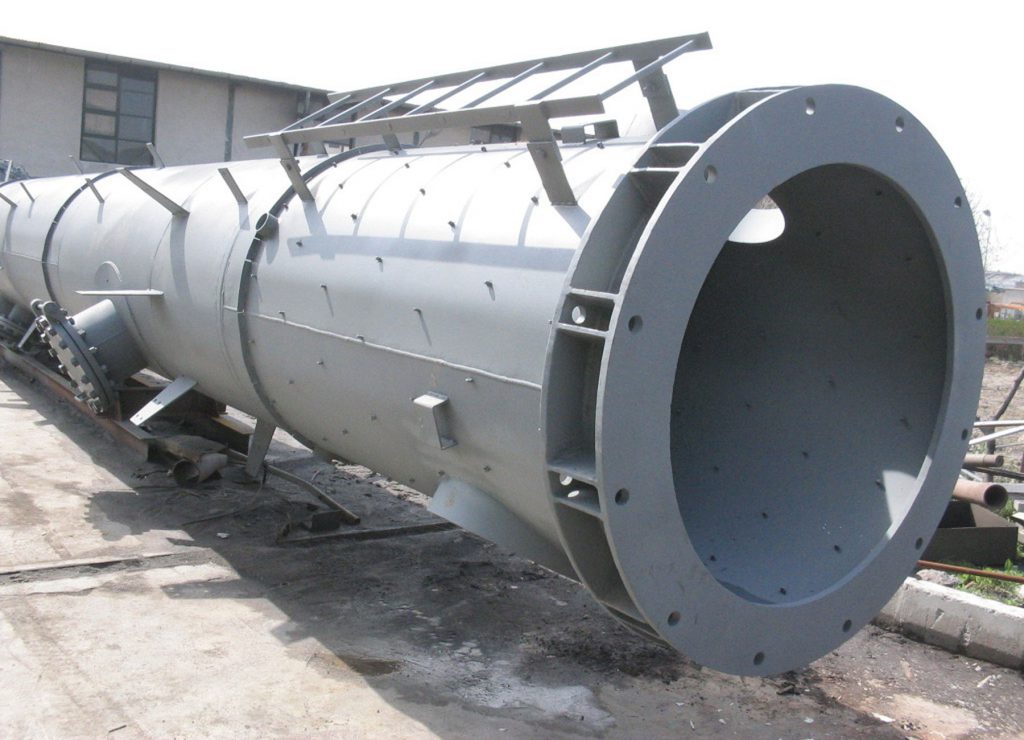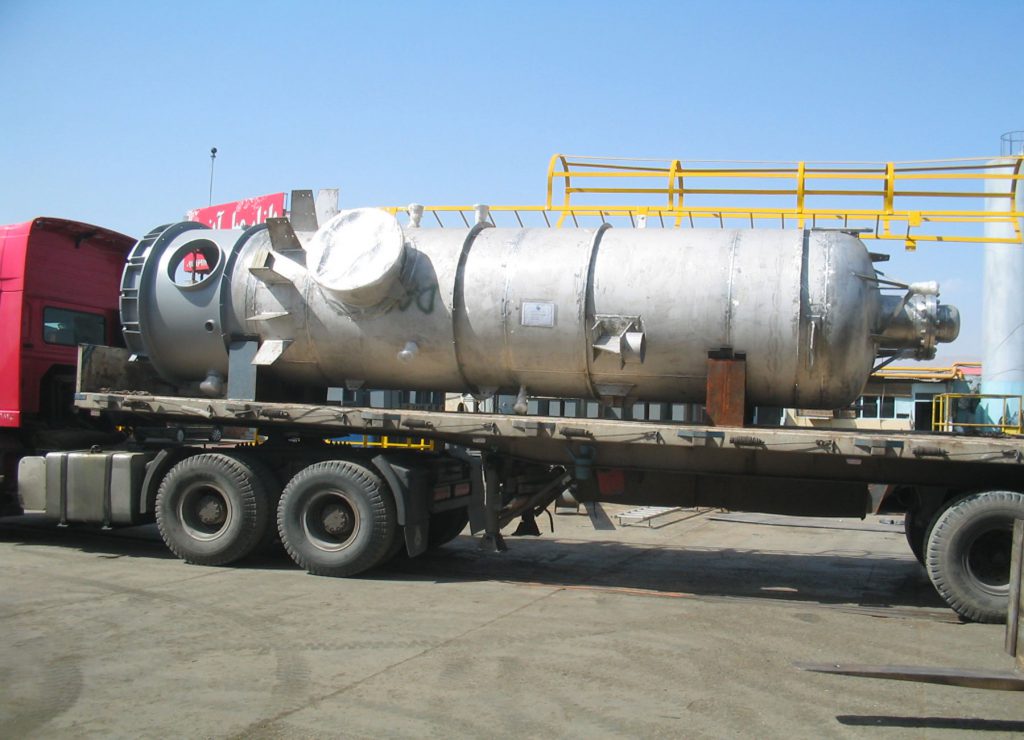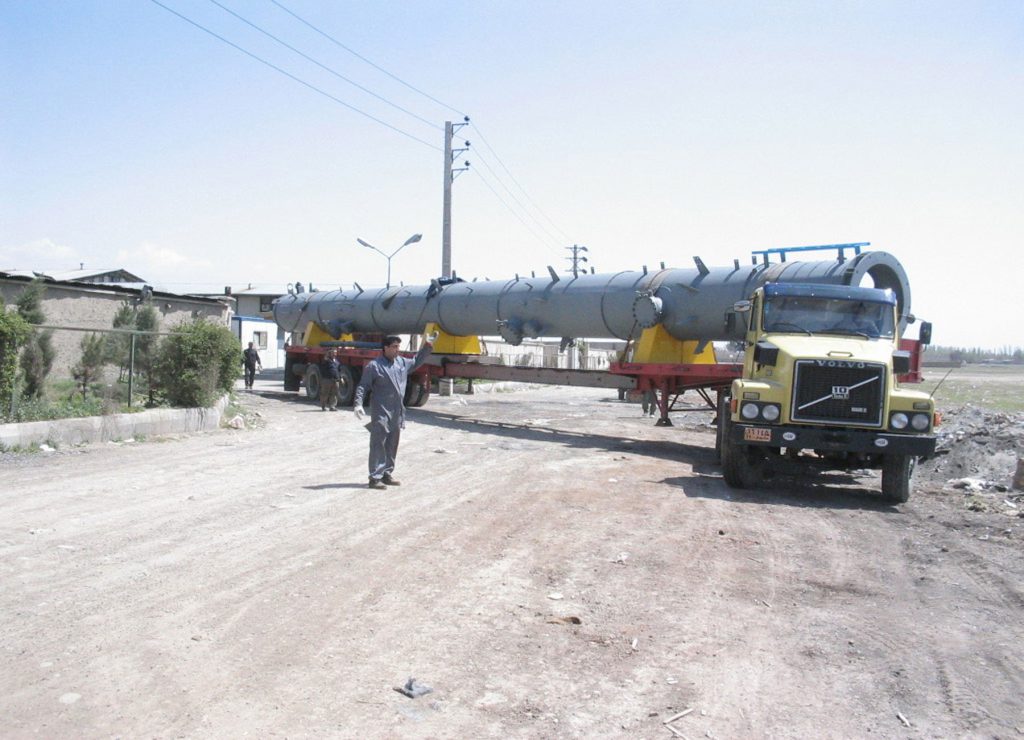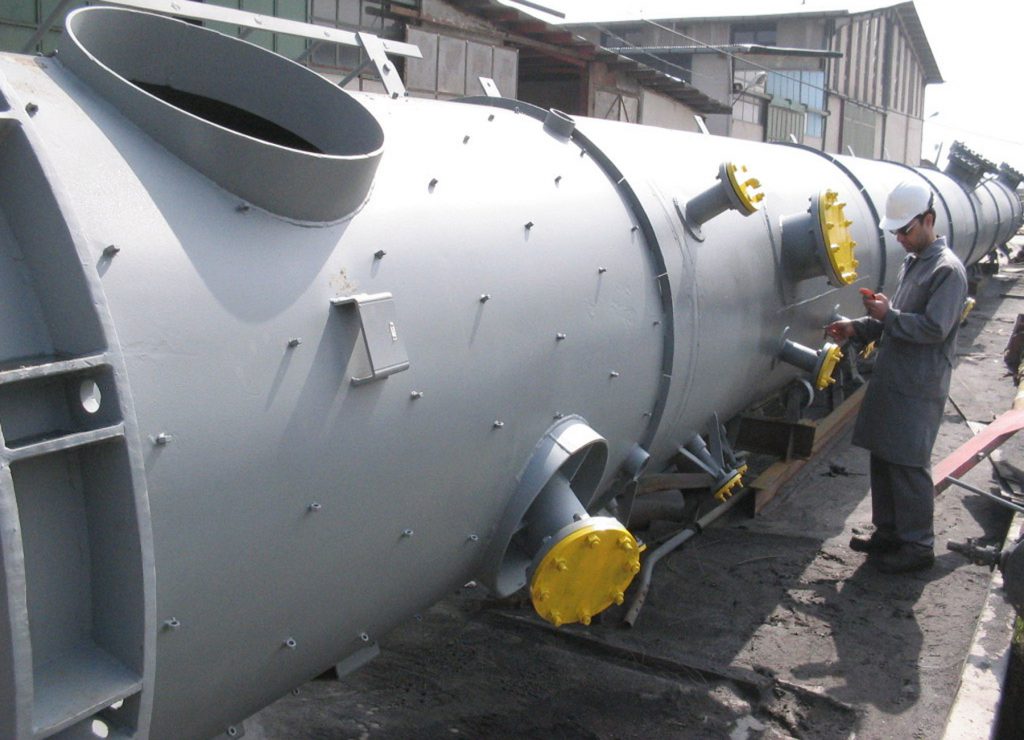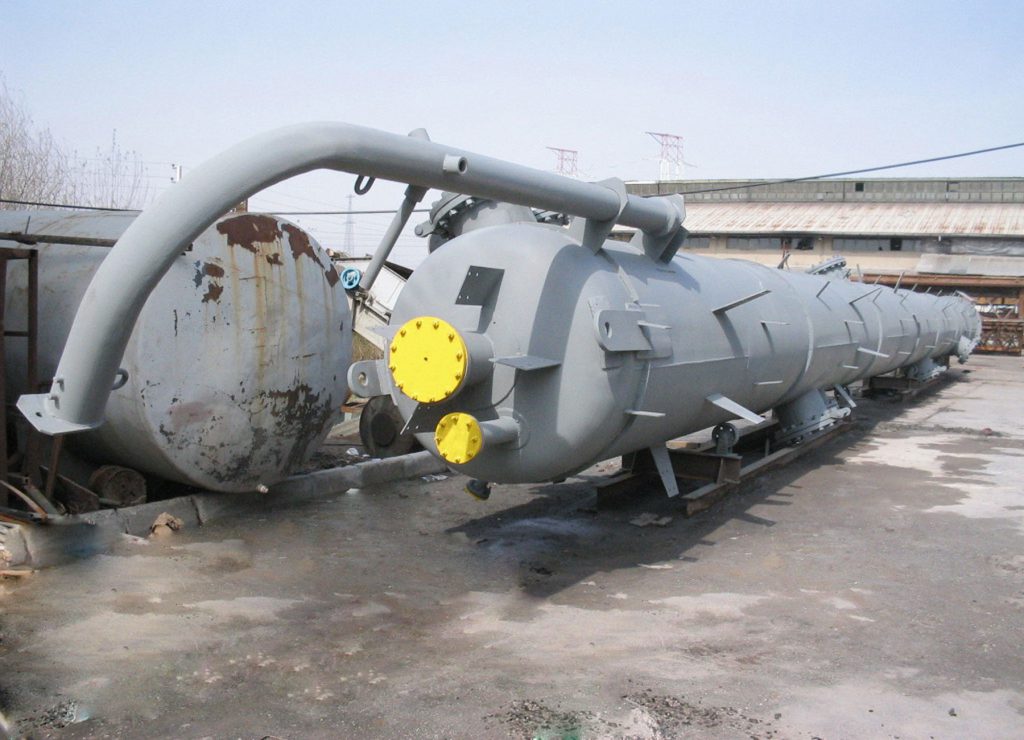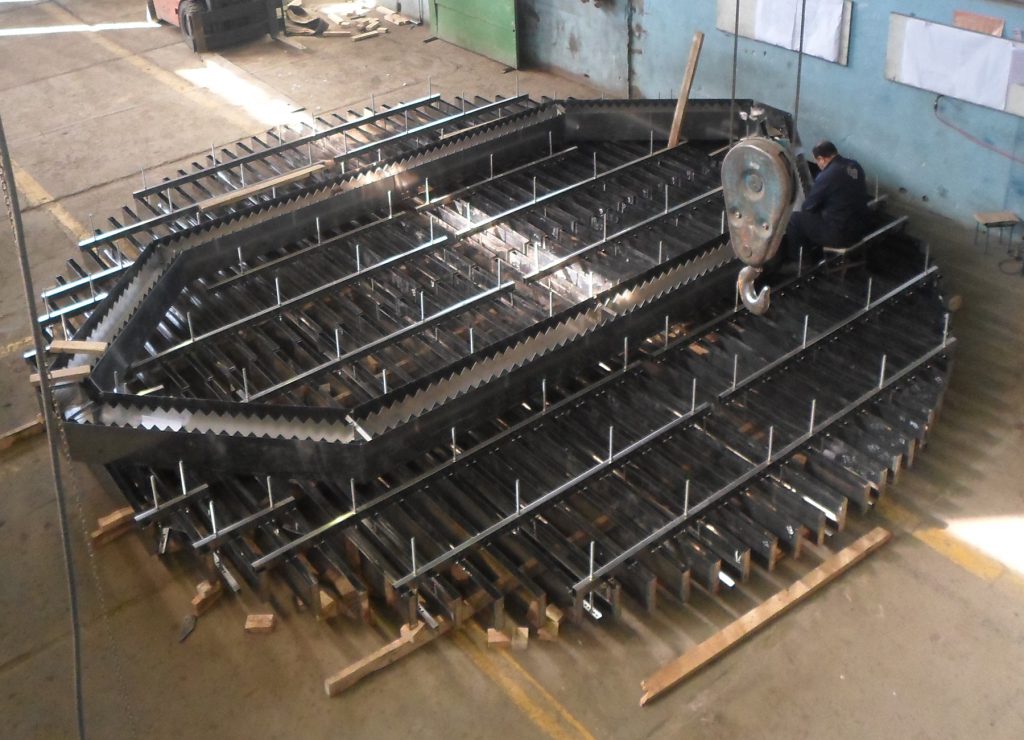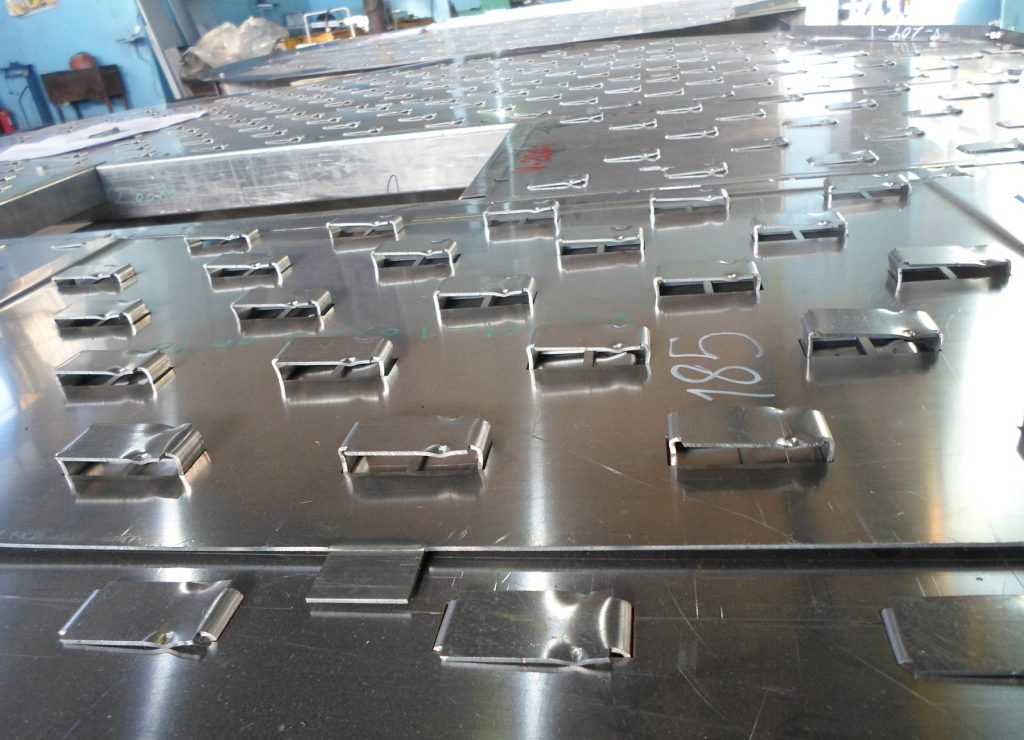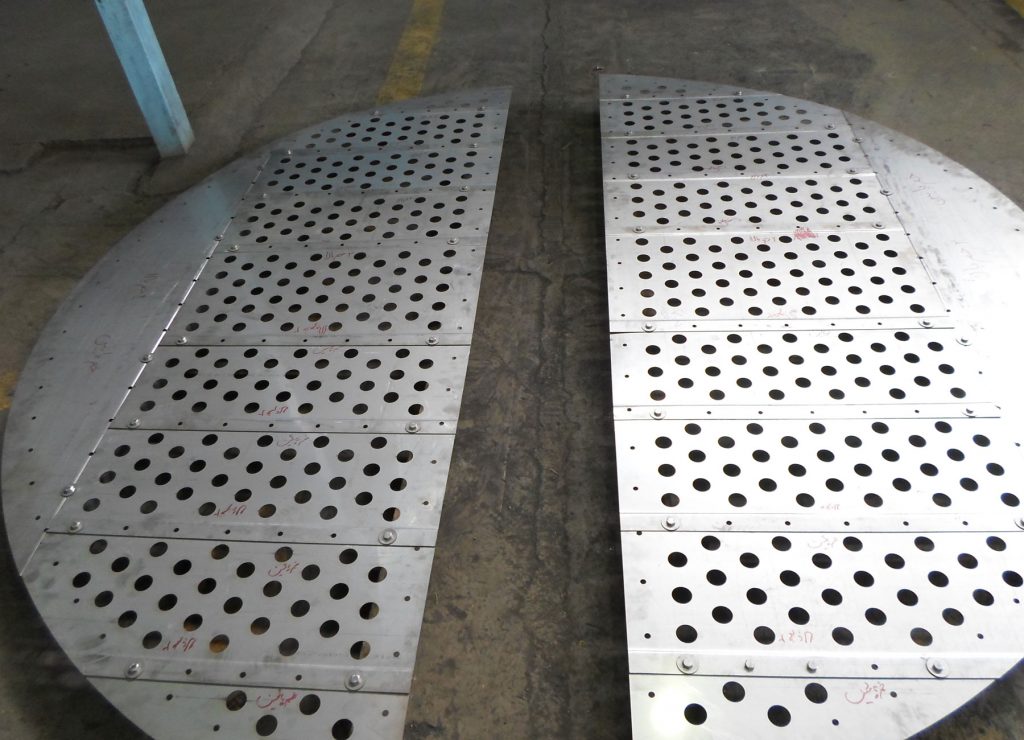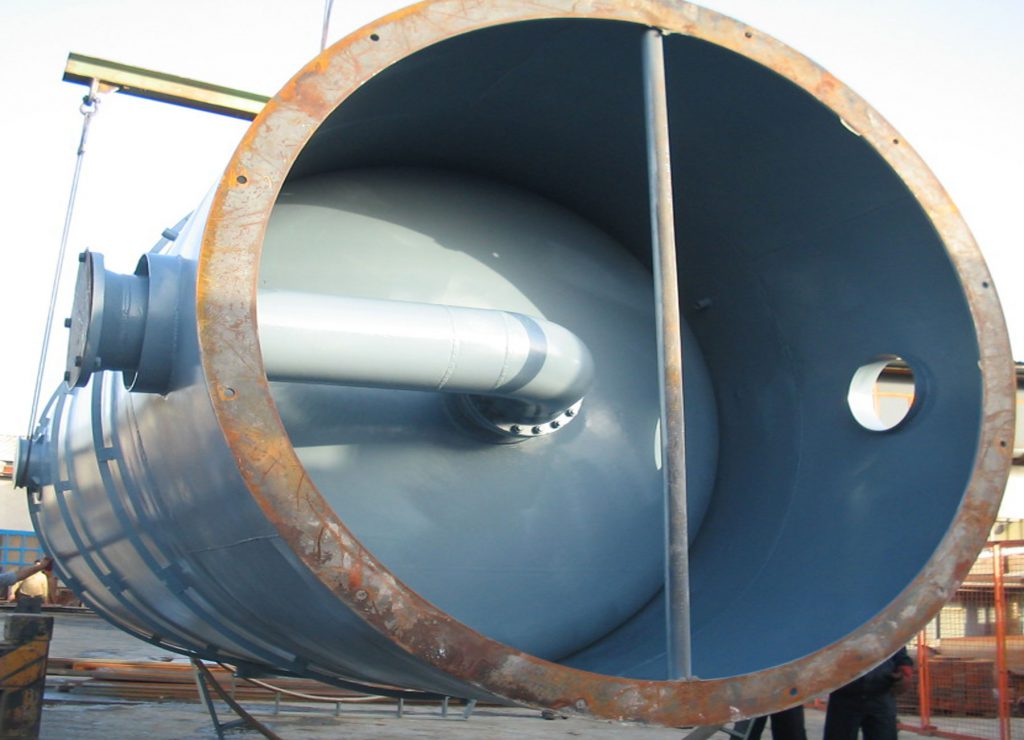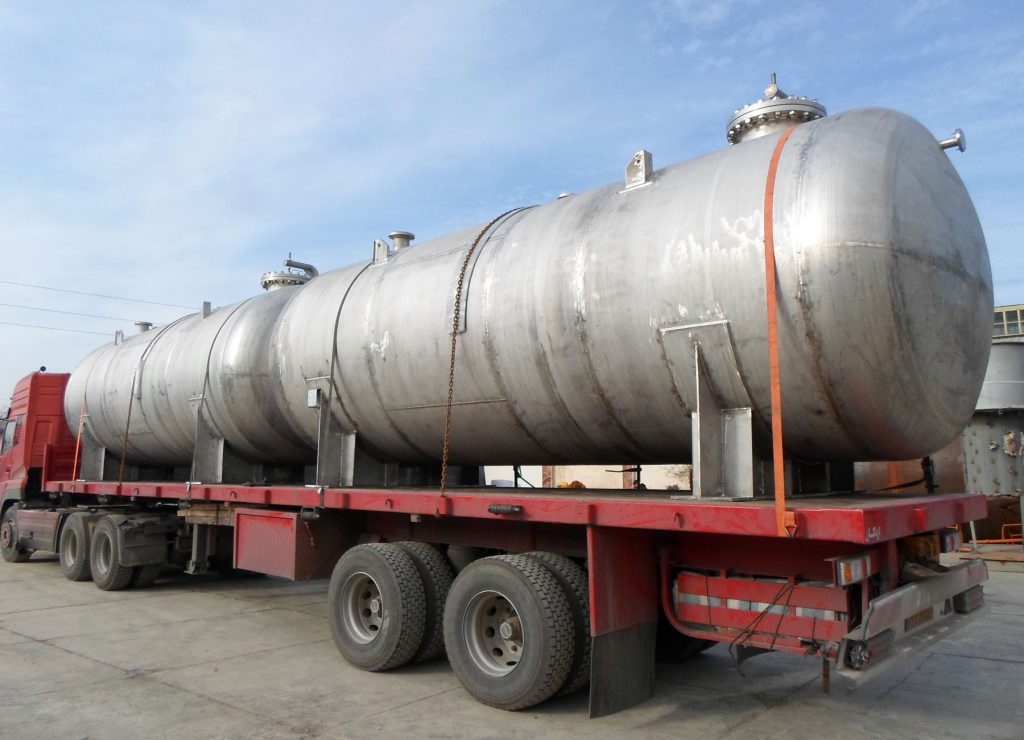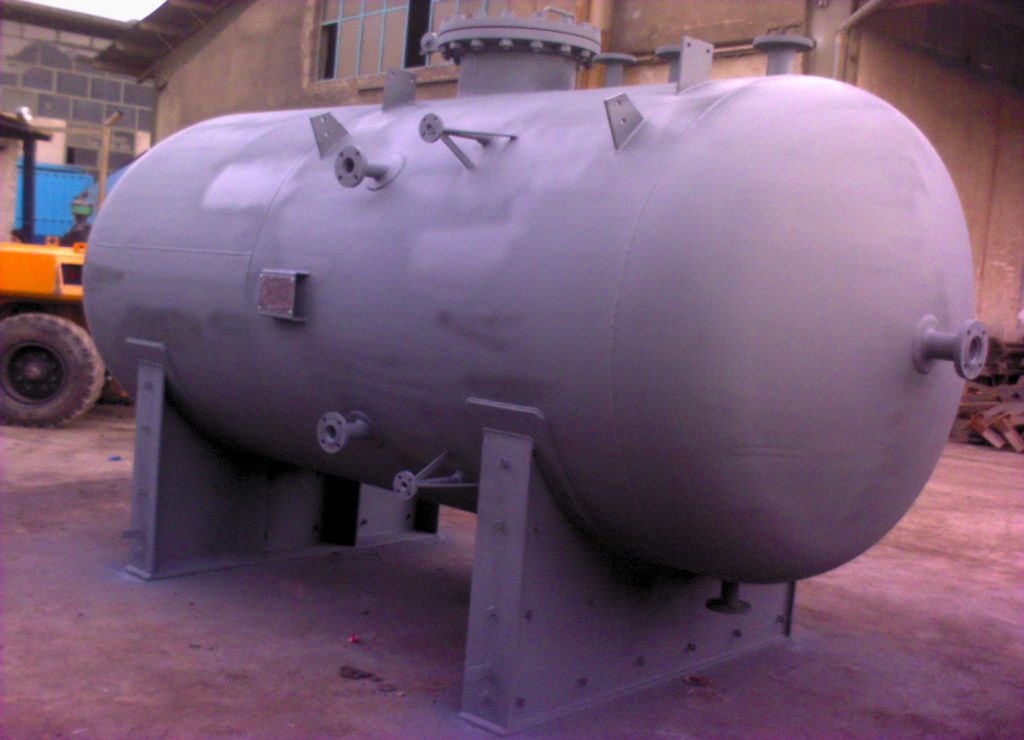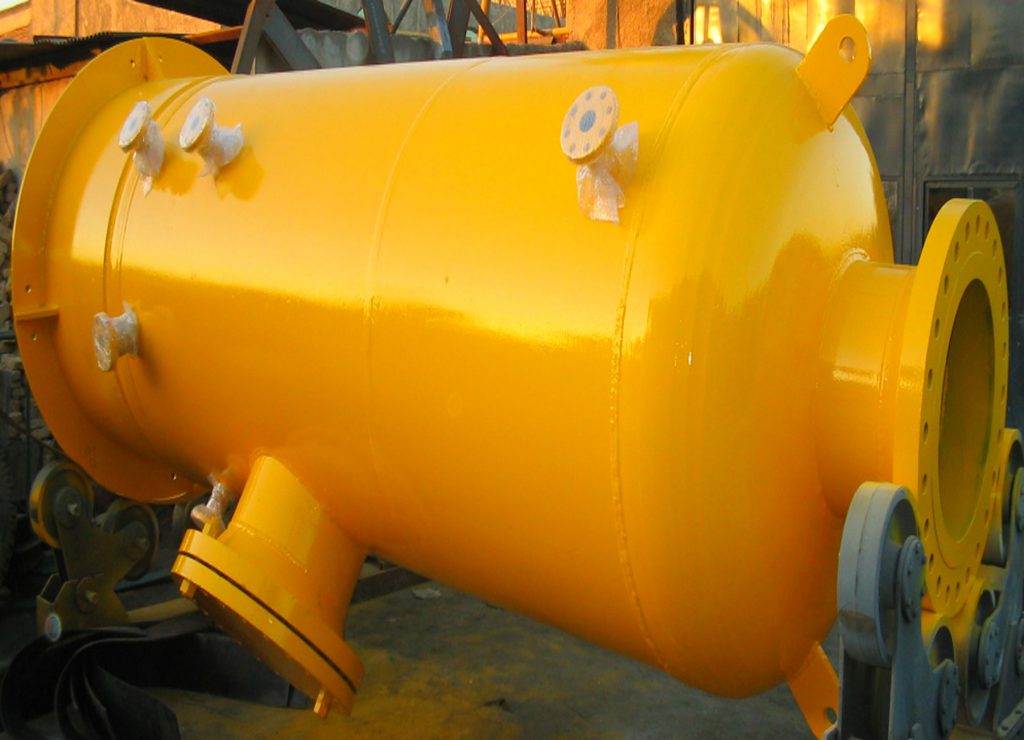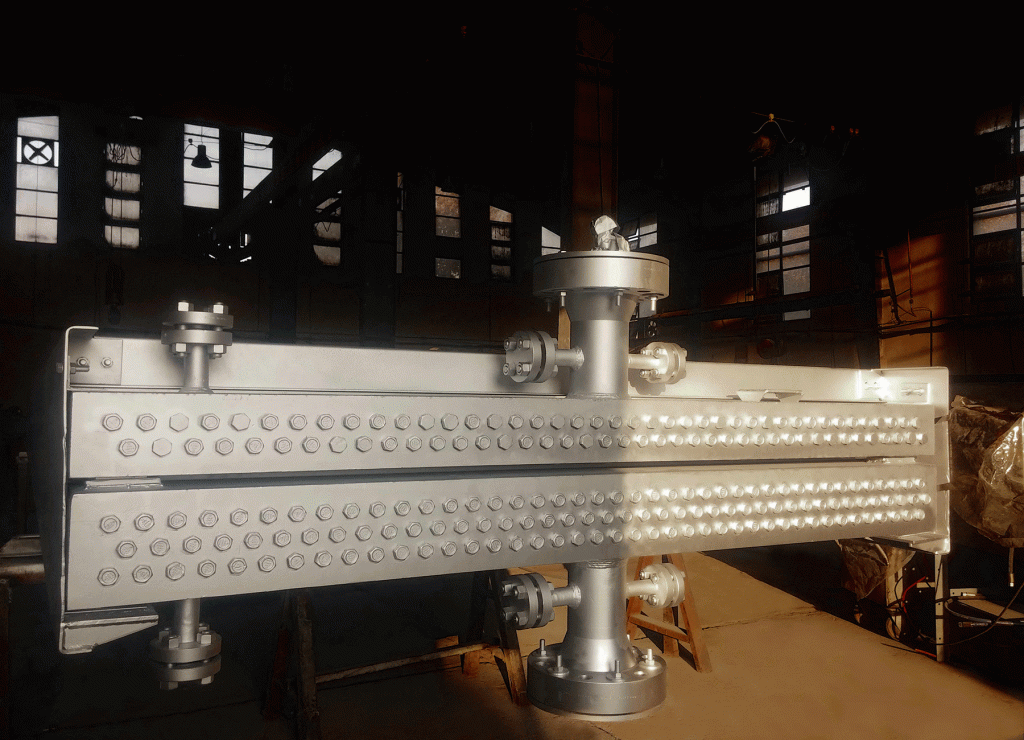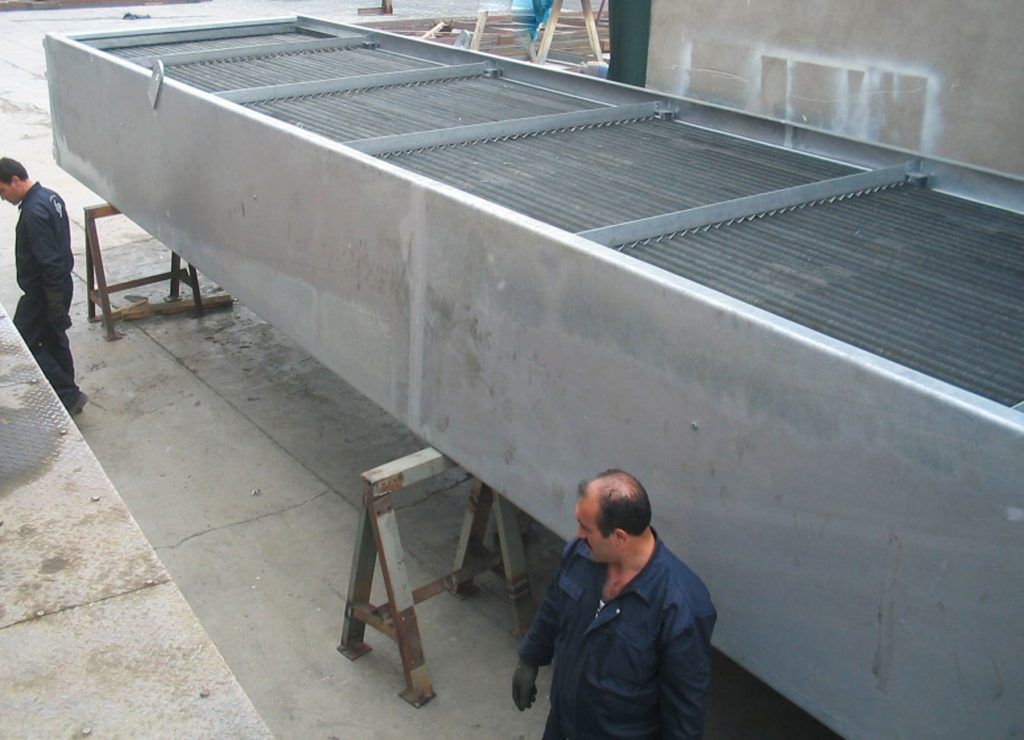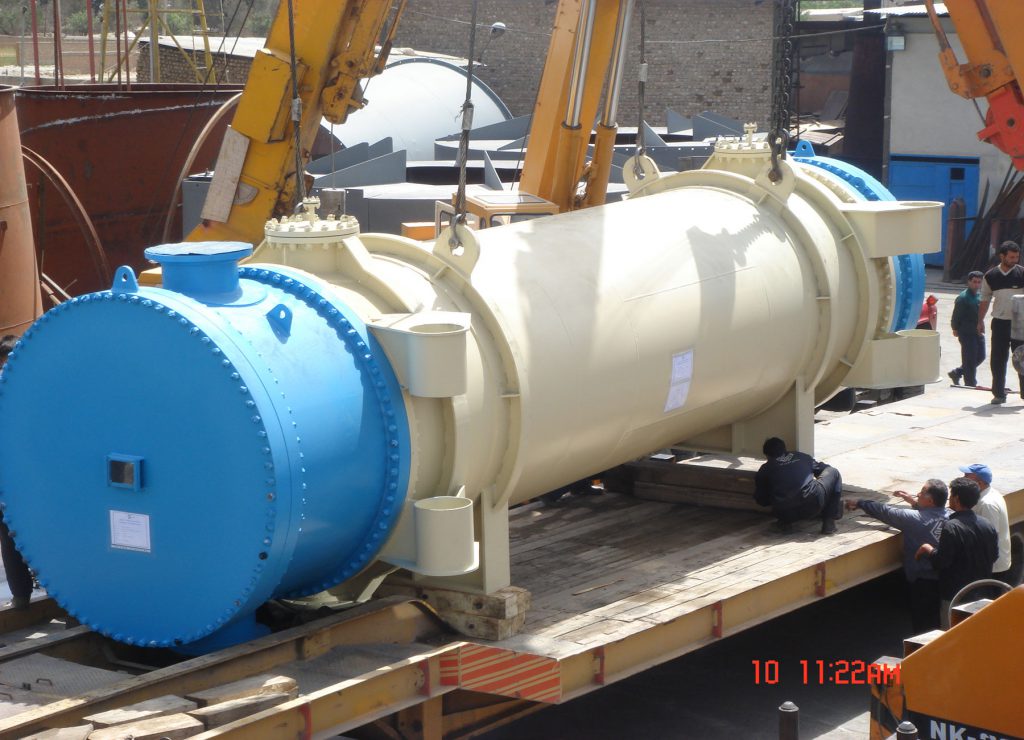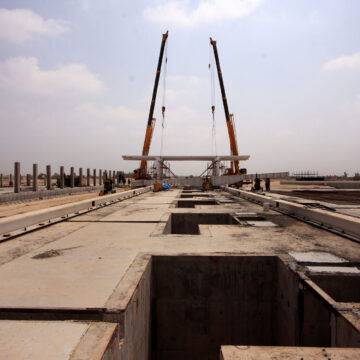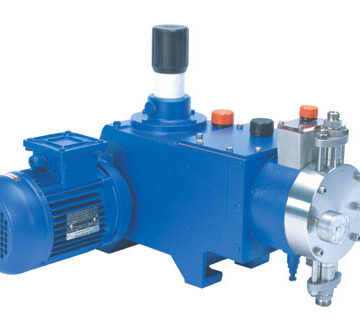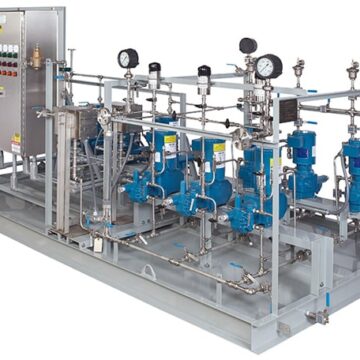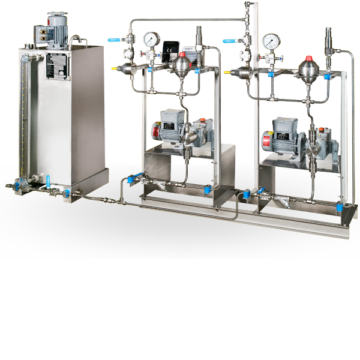Petrochemical Industries
UCGP is able to manufacture different equipment in the petrochemical industry.
Distillation columns
Vessels
Thermal Equipment
PC (Procurement, Construction)
Corrosion Inhibitor Package (CIP)
Distillation columns
Distillation is the process of separating components of a mixture based on different boiling points. Distillation is a widely used method for separating mixtures based on differences in the conditions required to change the phase of components of the mixture. To separate a mixture of liquids, the liquid can be heated to force components, which have different boiling points, into the gas phase. Examples of uses of distillation include purification of alcohol, desalination, crude oil refining, and making liquefied gases from the air. Distillation columns have various types such as:
- Packed Tower:
A Packed Tower is a kind of vessel filled with a packing material like Raschig rings or else to provide high removal efficiency with a low pressure drop.
-
Tray Towers:
Tray Towers, is a tall, cylindrical column. Inside, a series of trays are placed, one above the other.The types of tray used in distillation columns are as follows:- Valve Tray
- Sieve Tray
- Bubble Cap Tray
Vessels
Vessels are various containers that are designed based on their working pressure, kind of storage materials and their phases. Various types of vessels are designed and produced:
-
Rector:
Chemical reactors are vessels designed to contain chemical reactions. There are two main basic vessel type according to their operation:
- Continues Reactor
- Batch Reactor
-
Pressure Vessels:
A Pressure Vessel is a container designed to hold gases or liquids at a pressure substantially different from the ambient pressure. As a client order, it is the law that vessels over a certain size and pressure be built to code ASME Sec VIII, PD 5500.
-
Storage Tank:
Storage Tanks are containers used to hold liquids or compressed gases. They come in various shapes and sizes, depending on the pressure requirements. They are available in many shapes: vertical and horizontal cylindrical, open top and closed top, flat bottom, cone bottom, slope bottom and dish bottom. Depending on the used pressure, designing code can be divided into two categories:API 650: 0<P(kpa)<18
API 620: 18<P(Kpa)<25
Thermal Equipment
Heat exchangers are manufactured and designed in various types to transfer heat between two fluids in various pressures.
-
Shell and Tube Heat Exchanger :
A shell and tube heat exchanger is a common type of heat exchanger used in various industrial processes for heat transfer between fluids. It is the most common type of heat exchanger in oil refineries and other large chemical processes, and is suited for higher-pressure applications. As its name implies, this type of heat exchanger consists of a shell (a large pressure vessel) with a bundle of tubes inside it. One fluid runs through the tubes, and another fluid flows over the tubes (through the shell) to transfer heat between the two fluids. The set of tubes is called a tube bundle, and may be composed of several types of tubes: plain, longitudinally finned, etc
-
Plate Heat Exchanger :
A Plate Heat Exchanger is a type of heat exchanger that uses metal plates to transfer heat between two fluids. This has a major advantage over a conventional heat exhanger in that fluids are exposed to a much larger surface area because the fluids spread out over the plates.
-
Air Cooler:
These heat exchangers are suitable for using in petroleum refinery, oil and gas production and process industries as Process Coolers, Compressor Inter / After Cooler, Steam Condensers.
PC (Procurement, Construction) Project
These projects include the following:
- Construction and implementation of oil transmission lines
- Repairs and equipping of oil rigs
- Installation of oil and gas well equipmen
Corrosion Inhibitor Package (CIP)
One of the biggest problems in the oil and gas-related industries is corrosion in pipes and fittings, which eventually leads to decay and damage in various sectors. Repairing and replacing pipelines and fittings can be very costly and, in addition, can be time-consuming and sometimes dangerous. For this purpose, the corrosion inhibitor package has been designed and manufactured to make anti-corrosion chemicals resistant to oil and gas pipes and fittings.
UCGP is one of the most experienced designs, production, and manufacturing teams of Corrosion inhibitor packages that all production stages of this product are carried out under the supervision of experienced and professional engineers in this field.

